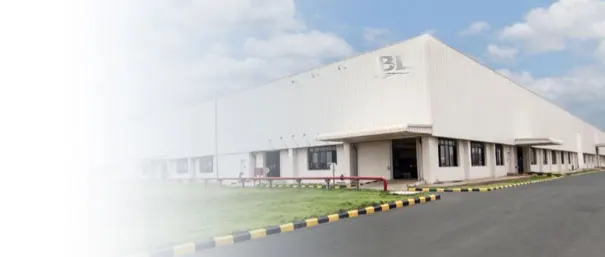ASTM 304 Stainless Steel: Comprehensive Guide to the Most Versatile Austenitic Grade
ASTM 304 stainless steel (UNS S30400) represents the gold standard in austenitic stainless steels, accounting for over 50% of global stainless steel production. Its 18/8 chromium-nickel composition delivers unmatched versatility across food processing, architectural, chemical, and industrial applications. This technical guide examines its metallurgical properties, manufacturing processes, performance characteristics, and selection criteria for engineering applications.
1. Chemical Composition (ASTM A240/A240M Standard)
| Element | Weight % | Metallurgical Function |
|---|---|---|
| Chromium (Cr) | 18.0-20.0 | Primary corrosion resistance via passive Cr₂O₃ film formation (minimum 10.5% required for stainless classification) |
| Nickel (Ni) | 8.0-10.5 | Stabilizes austenitic microstructure; enhances ductility and low-temperature toughness |
| Carbon (C) | ≤0.08 | Strengthens via interstitial solid solution; limited to prevent sensitization |
| Manganese (Mn) | ≤2.0 | Deoxidizer; partial nickel substitute in cost-sensitive applications |
| Silicon (Si) | ≤1.0 | Improves oxidation resistance; deoxidizer during melting |
| Phosphorus (P) | ≤0.045 | Residual impurity; controlled to maintain toughness |
| Sulfur (S) | ≤0.030 | Impurity; minimized to prevent hot cracking during welding |
| Nitrogen (N) | ≤0.10 | Optional addition for strength without reducing ductility |
2. Mechanical Properties at Ambient Temperature
Tensile Properties
- Ultimate Tensile Strength: 515-720 MPa
- Yield Strength (0.2% offset): ≥205 MPa
- Elongation (50mm gauge): ≥40%
Hardness & Toughness
- Brinell Hardness: ≤201 HB
- Rockwell Hardness: ≤92 HRB
- Charpy Impact (Longitudinal): ≥27J at -196°C
Physical Properties
- Density: 7.93 g/cm³
- Thermal Conductivity: 16.2 W/m·K at 100°C
- Coefficient of Thermal Expansion: 17.2 µm/m·°C (0-100°C)
3. Manufacturing Process Flow
- Melting: Electric Arc Furnace (EAF) with Argon Oxygen Decarburization (AOD) refining to achieve precise chemistry and low carbon content
- Continuous Casting: Produces slabs/blooms with controlled solidification for homogeneous microstructure
- Hot Rolling: 1100-1250°C temperature range with water quenching to maintain austenitic structure
- Cold Rolling: Multi-stand tandem mills for thickness reduction (0.3-6.0mm typical) with intermediate annealing
- Heat Treatment: Solution annealing at 1010-1120°C followed by rapid cooling to dissolve precipitates
- Surface Finishing: Pickling (HNO₃/HF), passivation, and optional mechanical polishing (No. 4, HL, mirror)
- Quality Control: 100% eddy current testing, ultrasonic inspection for plates >6mm, and PMI verification
4. Corrosion Resistance Performance
| Environment | Performance Rating | Notes |
|---|---|---|
| Atmospheric Exposure | Excellent | Resists rural, urban, and mild industrial atmospheres (C1-C3 per ISO 9223) |
| Fresh Water | Good | Suitable for potable water systems; avoid stagnant conditions with chlorides |
| Food Acids | Good | Resists acetic, citric, and lactic acids; not recommended for concentrated mineral acids |
| Chloride Solutions | Limited | Pitting resistance equivalent number (PREN) = 19; avoid >100ppm Cl⁻ at elevated temperatures |
| Oxidizing Acids | Poor | Not suitable for nitric acid >10% concentration or sulfuric acid >5% |
| High Temperature | Fair | Oxidation resistance to 870°C in intermittent service; continuous use limited to 925°C |
5. Industry-Specific Applications
Food Processing Equipment
USDA/FDA compliant for dairy processing tanks, brewery vessels, commercial kitchen equipment, and food transport containers. 304’s smooth surface (Ra ≤0.8μm) prevents bacterial adhesion and facilitates CIP cleaning.
Architectural Cladding
Preferred for exterior facades, roofing systems, and structural components in marine and urban environments. Available in mill finishes (2B), brushed (No. 4), or mirror-polished surfaces with PVD color coatings.
Chemical & Pharmaceutical
Used for storage tanks (pH 4-10), piping systems, and cleanroom equipment where 316L isn’t required. Electropolished surfaces (Ra ≤0.5μm) for pharmaceutical applications reduce particle generation.
Automotive Components
Exhaust system components (manifolds, mufflers), trim pieces, and structural reinforcements. High work-hardening rate enables complex deep-drawn parts with springback control.
Consumer Products
Kitchen appliances (refrigerator liners, dishwasher tubs), cookware, and cutlery. 18/8 designation ensures compatibility with food contact regulations (EU 1935/2004, FDA 21 CFR).
Industrial Equipment
Heat exchangers, conveyor systems, and fasteners. Low magnetic permeability (<1.01) suits electronic component manufacturing environments.
6. Comparison with Related Grades
| Grade | Key Composition Difference | Primary Advantage | Typical Applications |
|---|---|---|---|
| 304 | 0.08% C max | Balanced properties for general use | Food equipment, architectural panels, consumer goods |
| 304L | 0.03% C max | Superior weldability without sensitization | Heavy-gauge welded structures, chemical tanks |
| 304H | 0.04-0.10% C | Enhanced high-temperature strength | Boiler components, heat exchangers (>500°C) |
| 304LN | 0.03% C + 0.10% N | Higher strength via nitrogen addition | Structural applications requiring ASME compliance |
| 304Cu | 3% Cu addition | Improved formability and corrosion resistance | Deep-drawn components, marine hardware |
7. Fabrication Guidelines
Forming
Excellent ductility allows for severe deep drawing (Earing ratio ~0.95). Use stainless steel tooling to prevent iron contamination. Springback compensation required for bending (typically 2-4× mild steel).
Welding
Readily weldable by all standard methods (TIG, MIG, SMAW). Use ER308/ER308L filler metal. Post-weld cleaning with nitric acid passivation recommended for critical applications. Avoid prolonged heat input to prevent sensitization.
Machining
Work-hardening requires rigid setups, sharp tools (cobalt or carbide), and slow speeds (60-80 sfm). Use sulfurized oils for lubrication. Chip breaking geometry essential for automatic screw machines.
Finishing
Standard mill finishes: 2B (cold rolled, bright annealed), 2D (dull finish), BA (bright annealed). Mechanical polishing achieves Ra 0.2-0.5μm. Electropolishing removes 10-20μm surface layer for enhanced corrosion resistance.
8. Technical Specifications & Standards
| Standard | Designation | Scope |
|---|---|---|
| ASTM A240 | 304, 304L | Plate, sheet, and strip for pressure vessels and general applications |
| ASTM A276 | 304 | Stainless steel bars and shapes |
| ASTM A312 | TP304 | Seamless and welded austenitic stainless steel pipes |
| ASTM A480 | – | General requirements for flat-rolled stainless steel |
| EN 10088-2 | 1.4301 (304), 1.4307 (304L) | European standard for stainless steel technical delivery conditions |
| JIS G4305 | SUS304 | Japanese standard for cold-rolled stainless steel plate, sheet and strip |
9. Selection Recommendations
- For Welded Structures: Specify 304L to prevent intergranular corrosion in the heat-affected zone (HAZ) when section thickness exceeds 6mm
- Marine Environments: Consider 316/316L for applications with prolonged chloride exposure (>200ppm) or in splash zones
- High-Temperature Service: 304H provides superior creep resistance above 500°C; consult ASME Section II for allowable stresses
- Surface Critical Applications: Specify electropolished finishes (Ra ≤0.5μm) for pharmaceutical or semiconductor components to minimize particulate generation
- Cost Optimization: 201 series may substitute for non-critical applications where slightly reduced corrosion resistance is acceptable
- Certification Requirements: Request EN 10204 3.1/3.2 certificates and PMI testing for critical applications in oil/gas or nuclear sectors
Request Technical Support or Quotation
For customized ASTM 304 stainless steel solutions including plates, coils, pipes, or precision-cut components, contact our metallurgical experts. We provide mill-certified materials with full traceability and can assist with grade selection, fabrication advice, and just-in-time delivery for your project requirements.
.content-wrap {max-width: 1200px; margin: 0 auto; padding: 20px 30px; font-family: Arial, Helvetica, sans-serif; color: #333; line-height: 1.8}
.article-title {font-size: 28px; color: #222; font-weight: 700; margin: 0 0 30px; padding-bottom: 15px; position: relative; border-bottom: 2px solid #eee}
.article-title::after {content: “”; position: absolute; left: 0; bottom: -2px; width: 120px; height: 2px; background-color: #2c5282}
.article-intro {font-size: 16px; color: #444; margin: 0 0 40px; text-align: justify}
.section-title {font-size: 22px; color: #2c5282; font-weight: 600; margin: 50px 0 25px; padding-left: 15px; border-left: 4px solid #2c5282}
.table-container {width: 100%; overflow-x: auto; margin: 0 0 30px}
.spec-table, .compare-table {width: 100%; border-collapse: collapse; background-color: #fff; box-shadow: 0 2px 5px rgba(0,0,0,0.05)}
.spec-table th, .spec-table td, .compare-table th, .compare-table td {padding: 12px 15px; border: 1px solid #eee; text-align: left}
.spec-table th, .compare-table th {background-color: #f8f9fa; color: #2c5282; font-weight: 600}
.spec-table tr:hover, .compare-table tr:hover {background-color: #fafafa}
.property-grid {display: grid; grid-template-columns: repeat(auto-fit, minmax(300px, 1fr)); gap: 25px; margin: 0 0 40px}
.property-item {padding: 20px; background-color: #fafafa; border-radius: 6px; border: 1px solid #eee}
.property-item h3 {font-size: 18px; color: #2c5282; margin: 0 0 12px; font-weight: 600}
.property-item ul {margin: 0; padding-left: 20px}
.property-item li {margin: 0 0 8px; font-size: 15px}
.process-list {padding-left: 20px; margin: 0 0 35px}
.process-list li {margin: 0 0 18px; font-size: 15px}
.process-list strong {color: #2c5282}
.application-grid {display: grid; grid-template-columns: repeat(auto-fit, minmax(280px, 1fr)); gap: 25px; margin: 0 0 40px}
.application-item {padding: 20px; background-color: #fafafa; border-radius: 6px; border: 1px solid #eee}
.application-item h3 {font-size: 18px; color: #2c5282; margin: 0 0 12px; font-weight: 600}
.application-item p {font-size: 14px; color: #555; margin: 0}
.precaution-list {padding-left: 20px; margin: 0 0 35px}
.precaution-list li {margin: 0 0 12px; font-size: 15px}
.precaution-list strong {color: #2c5282}
.fabrication-grid {display: grid; grid-template-columns: repeat(auto-fit, minmax(280px, 1fr)); gap: 25px; margin: 0 0 40px}
.fabrication-item {padding: 20px; background-color: #fafafa; border-radius: 6px; border: 1px solid #eee}
.fabrication-item h3 {font-size: 18px; color: #2c5282; margin: 0 0 12px; font-weight: 600}
.fabrication-item p {font-size: 14px; color: #555; margin: 0}
.quote-cta-section {margin: 60px 0 20px; padding: 30px; background-color: #f8fafc; border-radius: 8px; border: 1px solid #e2e8f0}
.quote-cta-content {max-width: 800px; margin: 0 auto; text-align: center}
.quote-cta-content p {font-size: 16px; color: #475569; margin: 0 0 30px; line-height: 1.8}
.quote-cta-btn {display: inline-block; padding: 12px 35px; background-color: #2c5282; color: #fff; font-size: 16px; font-weight: 600; text-decoration: none; border-radius: 4px; transition: background-color 0.3s ease}
.quote-cta-btn:hover {background-color: #1e3a8a}


